Vienna’s Museum of Military History, known as the Heeresgeschichtliches Museum, is housed in a nineteenth century oriental-style building. The museum traces the history of the Austrian army from the Thirty Years’ War until 1945.
Arsenal
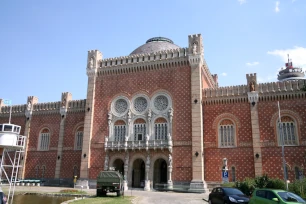
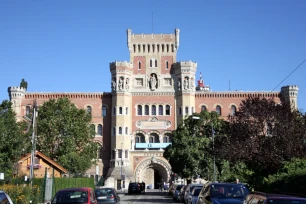
The Military Museum is built on the grounds of the Arsenal, a fortress-like military complex of barracks and ammunition storage. To reach the museum, enter through the imposing gate and walk straight ahead across the courtyard and through another gate which leads straight towards the museum building.
Construction
When the arsenal was built in the middle of the nineteenth century, Emperor Franz-Joseph I ordered the construction of a museum dedicated to the glory of his army.
A competition was held, and the winning design was created by architect Theophil von Hansen, who at the time was best known for his neoclassical Academy of Sciences in Athens. His design for the new museum couldn’t have been more different: a grand red-brick structure in a Neo-Byzantine style, crowned with a large central dome. The crenelated facade is decorated with sculptures of armory set in niches. Three arches, flanked by statues of war heroes, give entrance to the museum.
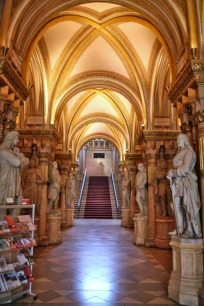
Interior
Enter the museum building, and you’ll see an almost palatial interior, starting with the Feldherrenhalle (Field Marshall’s Hall). Statues of historic military leaders stand beside enormous pillars adorned with Corinthian columns. A staircase leads to the Ruhmeshalle (Hall of Fame) on the first floor, the most sumptuous room in the whole museum. It is decorated with large frescoes depicting historic battles of the Austrian army.
Exhibits

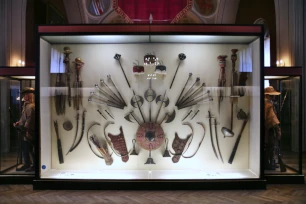
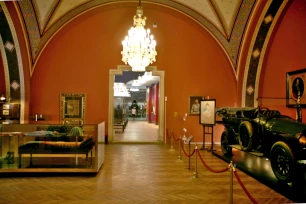
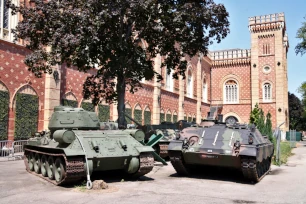
The museum has an interesting display of weapons, historical uniforms and other war-related objects. Some notable items include an Ottoman tent and an islamic banner seized from the Ottoman army. The convertible car in which archduke Franz Ferdinand was shot during a visit to Sarajevo is also one of the museum’s highlights.
The exhibits are spread over two floors. They are arranged in chronological order, starting on the first floor, to the left of the Ruhmeshalle, with the Thirty Years’ War and the battles of prince Eugene of Savoy against the Ottomans. The successes of the prince on the battlefield brought him plenty of prestige and wealth, evidenced by his grandiose Belvedere Palace.
The upper floor of the east wing recounts the Napoleonic Wars and the disastrous Austro-Prussian War, which resulted in a decisive defeat at Königgrätz.
The exhibits continue on the ground floor of the east wing, where a section is dedicated to the assassination of Franz Ferdinand – the heir to the Austro-Hungarian throne – in Sarajevo, an event that triggered the outbreak of the First World War. The car in which he was shot as well as his uniform (including bullet hole and blood stains) are on display here. The next room covers the campaigns of the Austrian army during WWI.
The years after the First World War, which resulted in the Anschluss and the dictatorship of the Nazi regime, are recounted in the west wing. The last rooms shows Austria’s history as a naval power. Today the country is completely landlocked, but the Habsburg Empire had access to the Adriatic Sea via Trieste, now in Italy.
A collection of historical tanks, including Austrian, Russian, German and French tanks, can be seen outside the building, in the Panzergarten.
- Next: Neue Burg
- More Sights & Attractions in Vienna

